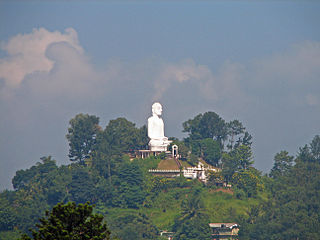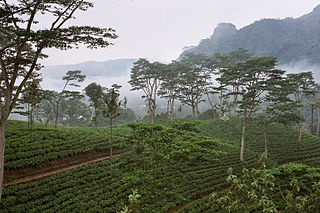
Exploring the history and experiences of mixed heritage persons and inter-racial relationships across the world

Exploring the history and experiences of mixed heritage persons and inter-racial relationships across the world
 Only half a percent of Sri Lanka’s 20 million people are of recognised mixed ethnicity. These 100,000 or so people belong to three distinct groups mirroring Sri Lanka’s history.
Only half a percent of Sri Lanka’s 20 million people are of recognised mixed ethnicity. These 100,000 or so people belong to three distinct groups mirroring Sri Lanka’s history.
The island appears to have been inhabited for thousands of years, remains of Homo Erastus have been found on the islands. The island’s indigenous people, the Wanniyala-Aetto or Veddas or Veddahs are believed to be the direct descendants of people who existed at the time of Balangoda Man who lived some 34,000 years ago. Today they only number about 2,500 individuals living mainly in the central, Uva and north-eastern parts of the island.
The Sinhalese are the largest ethnic group of Sri Lanka, making up 74% of the Sri Lankan population. According to folklore, they arrived in Sri Lanka in 543 BCE on the arrival of the exiled Prince Vijaya. They live mainly in the Central, Southern and Western parts of Sri Lanka and most are Buddhists and speak Sinhala, an Indo-Aryan language.
The Sri Lankan Tamil people (Ceylon Tamils or Eelam Tamils) are the second largest ethnic group (est. 12.6% -1981 census) and are said to have existed on the islands from around the 2nd century BCE. Many claim ancestral links to the old Jaffna kingdom, a former kingdom in the north of the island where today they constitute a majority and chieftaincies from the east where they live in significant numbers. Due to politics and their willingness to emigrate for work, they also have a very large diaspora spread across the globe.
Cinnamon, a native plant of Sri Lanka’s has been found archaeological finds in Egypt suggesting early trade between the Arab world and the island's inhabitants as early as 1500 BC. This long standing trade with the Arab world led to some traders settling on the islands between the 8th and 15th centuries. The Sri Lankan Moors (commonly referred to as Muslims) trace their ancestry to these Arab settlers and they form the third largest ethnic group at over 7% of the population. They are concentrated in the central highlands and the eastern coast where they sought refuge during the colonising Portuguese persecution.
 The first Europeans to arrive were the Portuguese in 1505 who found that the island divided into several warring kingdoms to busy to fend them off. The Portuguese founded a fort at the port city of Colombo in 1517 and gradually extended their control over the coastal areas. They brought in traders and African slaves to work as labourers and soldiers to fight against the Sri Lankans. The Sri Lankan Kaffirs are a distinct ethnic group who are partially descendants of this early colonial period. They are very similar to the Sheedis in Pakistan and the Siddis in India. Once, the Kaffirs spoke a distinctive creole based on Portuguese but it is now extinct. The term Kaffir is derived from an Arabic/Islamic word which means 'disbeliever' and is considered a very derogatory racist word in Southern Africa but not by these people. The Portuguese colonisation displaced a large part the Muslim (the Moors) population and was very unpopular with the other kingdoms on the island.
The first Europeans to arrive were the Portuguese in 1505 who found that the island divided into several warring kingdoms to busy to fend them off. The Portuguese founded a fort at the port city of Colombo in 1517 and gradually extended their control over the coastal areas. They brought in traders and African slaves to work as labourers and soldiers to fight against the Sri Lankans. The Sri Lankan Kaffirs are a distinct ethnic group who are partially descendants of this early colonial period. They are very similar to the Sheedis in Pakistan and the Siddis in India. Once, the Kaffirs spoke a distinctive creole based on Portuguese but it is now extinct. The term Kaffir is derived from an Arabic/Islamic word which means 'disbeliever' and is considered a very derogatory racist word in Southern Africa but not by these people. The Portuguese colonisation displaced a large part the Muslim (the Moors) population and was very unpopular with the other kingdoms on the island.
Over a hundred years later in 1638, one of the Sri Lanka kings made a deal with the Dutch to remove the Portuguese. In return, the King of Kandy, Rajasinghe II, would grant the Dutch a monopoly over trade on the entire island. As is common during the colonial era, the agreement was not adhered to and by 1660 the Dutch controlled everything, including Colombo that fell in 1656, save for the kingdom of Kandy. It was then the turn of the Catholic Portuguese settlers and their descendants to be persecuted by the Protestant Dutch who left the other religions alone. Many of the Portuguese and their mixed race descendants left for other parts of the Portuguese empire during this time. Also, there was a wave of settlement by the Malays of Sri Lanka as Indonesia was also a Dutch colony.
Britain occupied coastal areas of the island they called Ceylon in 1796 fearing that the French would control the island as they did the Netherlands. In 1802, the Treaty of Amiens ceded the Dutch part of the island to Britain and it became a crown colony of the British Empire. The British went on to fight the Kingdom of Kandy eventually overcoming it in 1815 bringing the whole island under British control. The 1818 Uva Rebellion attempted to wrest some of this control but failed.
 The British brought large numbers of Tamil workers as indentured labourers from Tamil Nadu in southern India to work the tea and rubber estates. These workers were not treated kindly and had to work in slave-like conditions. The Indian Tamils or sometimes called the Hill Country Tamils were left in a difficult "stateless" position after Independence resulting in the Governments of India and Sri Lanka agreeing to grant citizenship between them to some 450,000 people in 1988. The estimated 75,000 Tamils granted Indian citizenship but who wished to remain in Sri Lanka were allowed to stay though technically are not citizens. Today, Indian Tamils form a distinct ethnic group, separate from the Sri Lanka Tamils and comprise some 5% of the population. The second wave of immigration of the Sri Lankan Malays came from the Malay Peninsula during this time as Malay was now also part of the British Empire.
The British brought large numbers of Tamil workers as indentured labourers from Tamil Nadu in southern India to work the tea and rubber estates. These workers were not treated kindly and had to work in slave-like conditions. The Indian Tamils or sometimes called the Hill Country Tamils were left in a difficult "stateless" position after Independence resulting in the Governments of India and Sri Lanka agreeing to grant citizenship between them to some 450,000 people in 1988. The estimated 75,000 Tamils granted Indian citizenship but who wished to remain in Sri Lanka were allowed to stay though technically are not citizens. Today, Indian Tamils form a distinct ethnic group, separate from the Sri Lanka Tamils and comprise some 5% of the population. The second wave of immigration of the Sri Lankan Malays came from the Malay Peninsula during this time as Malay was now also part of the British Empire.
A hundred years after another armed uprising against the British, the 1848 Matale Rebellion, independence was finally granted but the island remained a dominion of the British Empire. In 1972, the Dominion of Ceylon became a republic within the Commonwealth, and its name was changed to Sri Lanka.
The Burghers are the Eurasian ethnic group, the result of the European colonisation of Sri Lanka. They are the male-line descendants of colonists who had married local Sinhalese or Tamil women. The community now mainly speak English though they have in the past spoken a Portuguese type creole. The name may have been first used around the time of the Dutch colonisation. In 1981, the Burgher population was about 0.2% of the total population and has been declining for many years as a result of migration to Australia, Canada and the United States.
LINKS